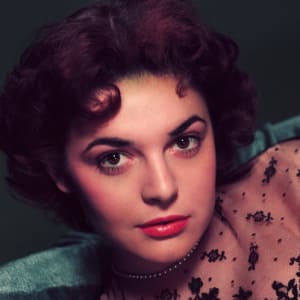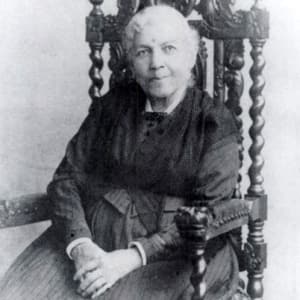
Anne Bancroft
Anne Bancroft was an Oscar Tony and Emmy Award-winning actress famous for her roles in The Miracle Worker and The Graduate. She was married to comedian and film director Mel Brooks.
Synopsis
Anne Bancroft was born on September 17, 1931, in the Bronx. After studying acting at the American Academy of Dramatic Arts, she made her film debut opposite Marilyn Monroe in 1952's Don’t Bother to Knock. Bancroft's most famous film roles were as the teacher of Helen Keller in The Miracle Worker and as seductress Mrs. Robinson in The Graduate. She was married to comedian and film director Mel Brooks for over 40 years. Bancroft died in 2005.
Early Life
Actress Anne Bancroft was born Anna Maria Louisa Italiano was born on September 17, 1931, in the Bronx , New York. An award-winning actress for her work on film, stage and television, Bancroft is best remembered for her role as the dedicated teacher in The Miracle Worker (1962) and as the mature seductress in The Graduate (1967). She grew up in the Bronx and studied acting at the American Academy of Dramatic Arts in 1948.
Initially, Bancroft found work on television in the early 1950s. She appeared on such shows as Studio One and used the stage name Anne Marno. In 1952, she got a film contract with 20th Century Fox and the head of the studio, Darryl F. Zanuck, renamed Anne Bancroft. She made her film debut opposite Marilyn Monroe in 1952's Don't Bother to Knock. Over the next few years, Bancroft appeared in several other, largely forgettable films, which failed to advance her career.
Returning to New York in the late 1950s, Bancroft found success on the Broadway stage. She co-starred with Henry Fonda in William Gibson's Two for the Seesaw, which was directed by Arthur Penn. Her portrayal of a bohemian dancer netted her a Tony Award for Best Featured Actress in a Play in 1958. Again showing her talent for transformation, Bancroft tackled another challenging role in The Miracle Worker the next year. Again working with Penn, she played Annie Sullivan, a teacher of the blind, who tries to help Helen Keller (played by Patty Duke), a young blind and deaf girl, learn to communicate. Bancroft won another Tony Award for her convincing performance as the devoted and determined educator.
Most Notable Roles
Reprising their roles, Bancroft and Duke starred in the 1962 film adaptation of The Miracle Worker. They each won an Academy Award for their performances—Bancroft in the Best Actress category and Duke in Best Supporting Actress category. Bancroft's next major film role had her as a woman trapped in a loveless marriage in The Pumpkin Eater (1964), which brought her an Academy Award nomination. Around this time, she married the multitalented Mel Brooks, known as a comedic actor, director and writer. The two formed one of Hollywood's greatest love stories and remained devoted to each other throughout her life. Bancroft had been previously married to Martin May in the 1950s, but their union ended in divorce.
In 1967, Bancroft took on her signature role of Mrs. Robinson in The Graduate. Playing an elegant, but bitter and manipulative wife and mother, her character seduced her daughter's boyfriend, Benjamin, played by Dustin Hoffman. Ironically, Bancroft was only about six years older than Hoffman when the film was made. She was widely praised for her work on the film and earned an Academy Award nomination for her performance.
Maturing Actress
Winning her first Emmy Award in 1970, Bancroft starred in Annie, The Women in the Life of a Man (1970), which also featured her husband Mel Brooks. She took some time off from acting after the birth of their son, Max, in 1972. Showing her range as a performer, she returned to the big screen in the Neil Simon comedy, The Prisoner of Second Avenue (1975), with Jack Lemmon, and in the historical drama, The Hindenburg (1975), with George C. Scott. Starring an aging ballerina, Bancroft starred opposite Shirley MacLaine in the drama The Turning Point (1977). That same year, she played the first female prime minister of Israel, Golda Meir, on Broadway in Golda, which reunited her with director Arthur Penn. Bancroft received a Tony Award nomination for her portrait of this famed world leader.
In addition to co-starring on the film, Bancroft directed the 1980 comedy Fatso featuring Dom DeLuise. The rest of the decade was filled with memorable comedic and dramatic performances by Bancroft. In To Be or Not To Be (1983), she and her real-life husband played a husband-wife acting team in this underrated World War II comedy. Taking on much darker material, she played the mother superior in Agnes of God (1985), which led to her final Academy Award nomination. Bancroft went on to play the mother in the suicide drama ‘Night, Mother (1986) with Sissy Spacek.
Later Years
In the 1990s, Bancroft took on a lot of supporting roles in films and on television. For her television work, she received several Emmy Award nominations for her work and won the award for Outstanding Supporting Actress in a Miniseries or Movie for Deep In My Heart in 1999. In the television movie, she played a woman who has a daughter as a result of being raped. On the big screen, Bancroft appeared as Ms. Dinsmoor in the modern adaptation of the Charles Dickens' classic, Great Expectations (1998), with Ethan Hawke and Gwyneth Paltrow.
Continuing to work, Bancroft appeared on television in Haven (2001). Based on a true story, she played Ruth Gruber, an American woman who helped hundreds of Jewish people escape Nazi Germany. Bancroft received an Emmy Award nomination for her work. Her last completed performance was in the television adaptation of the Tennessee Williams' play The Roman Spring of Mrs. Stone, which earned her a final Emmy Award nomination.
While filming Spanglish with Adam Sandler, Bancroft was forced to drop out of the project because of illness. She died of uterine cancer on June 6, 2005, at Mt. Sinai Hospital in New York. She was survived by her husband, their son, Max, and their grandson.




